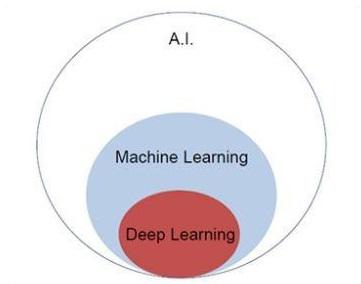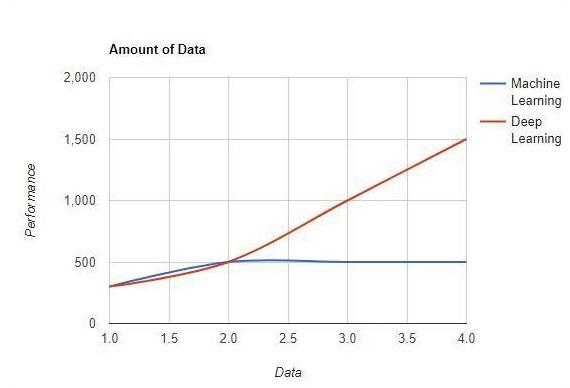Machine Learning and Deep Learning
Artificial Intelligence is one of the most popular trends of recent times. Machine learning and deep learning constitute artificial intelligence. The Venn diagram shown below explains the relationship of machine learning and deep learning −

Machine Learning
Machine learning is the art of science of getting computers to act as per the algorithms designed and programmed. Many researchers think machine learning is the best way to make progress towards human-level AI. Machine learning includes the following types of patterns
- Supervised learning pattern
- Unsupervised learning pattern
Deep Learning
Deep learning is a subfield of machine learning where concerned algorithms are inspired by the structure and function of the brain called artificial neural networks.
All the value today of deep learning is through supervised learning or learning from labelled data and algorithms.
Each algorithm in deep learning goes through the same process. It includes a hierarchy of nonlinear transformation of input that can be used to generate a statistical model as output.
Consider the following steps that define the Machine Learning process
- Identifies relevant data sets and prepares them for analysis.
- Chooses the type of algorithm to use
- Builds an analytical model based on the algorithm used.
- Trains the model on test data sets, revising it as needed.
- Runs the model to generate test scores.
Difference between Machine Learning and Deep learning
In this section, we will learn about the difference between Machine Learning and Deep Learning.
Amount of data
Machine learning works with large amounts of data. It is useful for small amounts of data too. Deep learning on the other hand works efficiently if the amount of data increases rapidly. The following diagram shows the working of machine learning and deep learning with the amount of data −

Hardware Dependencies
Deep learning algorithms are designed to heavily depend on high-end machines unlike the traditional machine learning algorithms. Deep learning algorithms perform a number of matrix multiplication operations, which require a large amount of hardware support.
Feature Engineering
Feature engineering is the process of putting domain knowledge into specified features to reduce the complexity of data and make patterns that are visible to learning algorithms it works.
Example − Traditional machine learning patterns focus on pixels and other attributes needed for feature engineering process. Deep learning algorithms focus on high-level features from data. It reduces the task of developing new feature extractor of every new problem.
Problem Solving Approach
The traditional machine learning algorithms follow a standard procedure to solve the problem. It breaks the problem into parts, solve each one of them and combine them to get the required result. Deep learning focusses in solving the problem from end to end instead of breaking them into divisions.
Execution Time
Execution time is the amount of time required to train an algorithm. Deep learning requires a lot of time to train as it includes a lot of parameters which takes a longer time than usual. Machine learning algorithm comparatively requires less execution time.
Interpretability
Interpretability is the major factor for comparison of machine learning and deep learning algorithms. The main reason is that deep learning is still given a second thought before its usage in industry.
Applications of Machine Learning and Deep Learning
In this section, we will learn about the different applications of Machine Learning and Deep Learning.
Computer vision which is used for facial recognition and attendance mark through fingerprints or vehicle identification through number plate.
Information Retrieval from search engines like text search for image search.
Automated email marketing with specified target identification.
Medical diagnosis of cancer tumors or anomaly identification of any chronic disease.
Natural language processing for applications like photo tagging. The best example to explain this scenario is used in Facebook.
Online Advertising.
Future Trends
With the increasing trend of using data science and machine learning in the industry, it will become important for each organization to inculcate machine learning in their businesses.
Deep learning is gaining more importance than machine learning. Deep learning is proving to be one of the best techniques in state-of-art performance.
Machine learning and deep learning will prove beneficial in research and academics field.
Conclusion
In this article, we had an overview of machine learning and deep learning with illustrations and differences also focusing on future trends. Many of AI applications utilize machine learning algorithms primarily to drive self-service, increase agent productivity and workflows more reliable. Machine learning and deep learning algorithms include an exciting prospect for many businesses and industry leaders.




